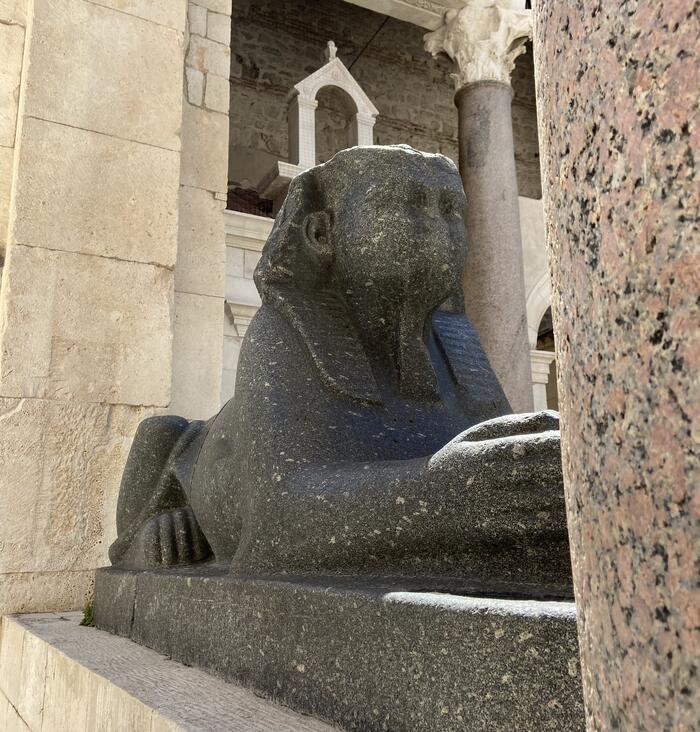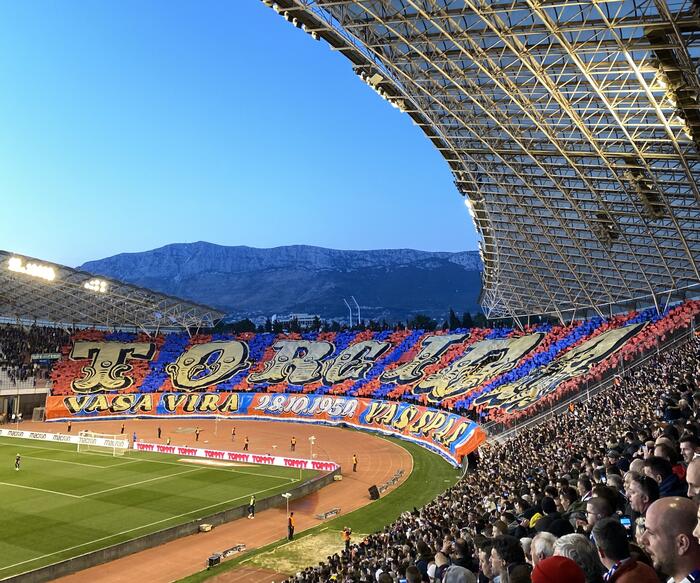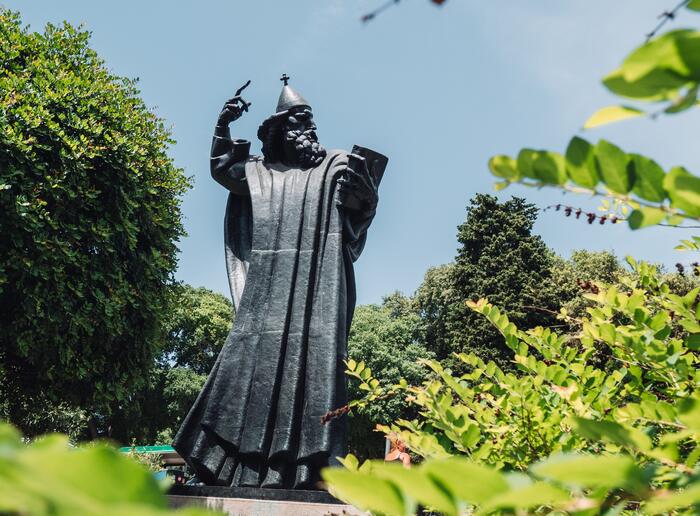Split is the largest city on the eastern coast of the Adriatic Sea and the second largest Croatian city. It is an economic and tourist center, and every year it attracts more and more guests from all over the world. It is known for the ancient Roman palace, the beautiful sea and the islands that surround it. Although it's a relatively small city compared to other European tourist metropolises, it does not fall far behind in terms of interesting things and facilities. Its history, gastronomy and vibe are certainly just some of the reasons why Split is an essential summer location. That's exactly why it's worth learning more about it, and today we bring you 15 things you should know before your arrival.
1. City where a Roman emperor used to go on vacations

The panorama of Split today is unimaginable without the Palace, which rises in the immediate vicinity of the Riva and adorns the old core of Split. But do you know how and when it was created? Emperor Diocletian was a Roman emperor who ruled from 284 to 305 AD. He was born in Salona, and near the end of his life he retired to a summer house he built by the nearby town of Split near the healing sulfur springs. We can say that this is not an ordinary cottage, but a palace in every sense of the word. Stone from Brač, black graphite from Africa and marble from Italy make the Palace in the center of Split a stunning sanctuary that covers 40,000 square meters. The palace is divided into four parts, of which the southern part was intended for the emperor, and the northern part for the imperial guard. Several doors led to the interior. Today you can find them near the monument to Gregory of Nin (Golden Gate), near the market (Silver Gate), on the west side near the Benedetti Palace (Iron Gate) and at the exit from the Cellar towards the sea (Brass Gate). When they called him from Rome to return, the emperor replied: "If you saw where I settled, you would never ask me to come back". Everything is clear from this sentence, isn't it?
2. How Split got its name?

When you type the term "Split, Croatia" into Google, probably the first thing you will see in the photos is Diocletian's Palace, which you learned a little more about a few lines above. We can responsibly claim that the palace of the Roman emperor is the symbol of the city of Split. In fact, one of the theories of how Split got its name is the fact that the Latin word for "palace" (palatium) is irresistibly reminiscent of past versions of the name of this city (Spalatus, Spalatium). But there is another, more romantic, version of how this city on the Adriatic coast got its name, and it is connected to nothing else but - a flower. The whole of Dalmatia is covered with a very famous flower, "brnister", and Split is no exception. But for today's story, the Greek name is more important, which is "Asphalatos", or in Greek "Ασπάλαθος". See where we're going with this? Before emperor Diocletian, Greek settlers spent their days in this area and we can imagine that it was they who gave Split its name, looking at the yellow hills around this city. Of course, it's impossible to know something like that for sure, all these theories are based relative solid evidence from the past.
3. A dash of Egypt on the Mediterranean

Along with the pyramids, the sphinx is the most recognizable symbol of ancient Egypt and the myths associated with it. But did you know that you can see sphinxes in Croatia, in the very center of Split, and what is the connection between Split and Egypt? The aforementioned emperor Diocletian, who is believed to have fortified the city of Split, was a great fan of Egyptian culture. Moreover, Egypt was a Roman territory in his time, therefore emperor Diocletian himself was actually the "owner" of Egypt, so he took what he liked without any problem or expense. He especially liked the sphinxes that he decided to bring with him to decorate his holiday palace in Split. According to his order, as many as 12 sphinxes were allegedly delivered from Egypt to decorate the facades of the palace. Most sphinxes were destroyed in Christian campaigns because of the belief that they were pagan symbols. The most well-preserved is the one on the Peristil, made of black African granite and standing proudly for thousands of years on one of Split's most beautiful squares. It originates from the era of Pharaoh Thutmose III. so it is considered one of the oldest subjects in Split (more than 3000 years).
4. The oldest cathedral in the world

Ironically, although Diocletian once expelled the Christians, the city he founded is now the city with the oldest cathedral in the world, which still holds ceremonies and is in its original structure without major restoration work on the interior and exterior. It's Split's cathedral of St Domnius (Duje). The cathedral is located in the complex of Diocletian's palace on the Peristil and was originally an imperial mausoleum, built at the beginning of the 4th century, and the then Roman emperor Diocletian decided that he wanted to have eternal rest there. In the 7th century, the population was expelled before the Avars and Slavs, and when some of them returned to Split, they turned the imperial mausoleum into a Christian church, removed the pagan idols and the sarcophagus in which the emperor rested. Today it is open for visits (except during the Holy Mass), and we also recommend a visit to the bell tower from where you will get the most beautiful view of Split and the nearby islands (Čiovo, Brač, Šolta).
5. Hajduk as a religion of its own

It is known that Split is the capital of the Olympians and is probably the city where the most Olympic medals per capita came from. However, Split has one sports club that it puts above all, regardless of achievements. Hajduk is a club that has been sung about in various songs; matches are not missed and Hajduk worship is a certain lifestyle that the people of Split love to nurture. Walking around the city, you will come across countless murals and graffiti dedicated to the club, and matches at Poljud are a different kind of experience that should not be missed, either because of a visit to one of the most beautiful stadiums in the world, or because of the match and the choreography of the famous Torcida, a loyal fandom of Hajduk's victories and defeats. You can easily tell by the people in town when a match is being played. Everyone is dressed in white and wearing scarves to support Hajduk, and they return to each subsequent one with the same enthusiasm, regardless of the outcome.
6. Olympic town

As we mentioned earlier, Split is really a city of top athletes, and the results and Olympic medals confirm that statement. Apart from the legendary wild-card Goran Ivanišević and the victory in Wimbeldon, which is still talked about today, Split can boast of as many as 72 athletes with Olympic medals. Their names forever adorn the plaques of the west bank of the Riva, and some even brought two medals back to Split. We cannot fail to mention the basketball club Jugoplastika, which FIBA declared the best basketball club of the 20th century. We can say that this city really lives sports, which once again proves that the Mediterranean way of life is one of the healthier ones.
7. Picigin – Split sport

When we talk about the sports, it is necessary to mention picigin [pitzigin]. Picigin is a Croatian amateur sport that originates from Split, specifically from Bačvice beach, it is played by people of all ages, and is protected as Croatian intangible cultural heritage. Although it's mostly a summer sport, enthusiasts play picigin all year round, and it is already traditional to play picigin in Bačvice on the first day of the new year. Picigin is a game in which there are no winners, and therefore it is difficult to talk about strict rules. The basic rules are very simple: five players in the sea ten to twenty centimeters deep (if the sea is deeper, it only slows down the game and reduces the attractiveness) are arranged in a pentagon six to seven meters apart. They use a ball (coloquially called "balun") by hitting it with their palms, trying for it not to fall into the sea.
8. Grgur Ninski's lucky toe

Apart from top athletes, Split is also home to top artists. One of the best sculptors of all time, Ivan Meštrović, honored Split with a statue of Grgur Ninski. The statue is a source of great pride for the people of Split, and over time, the monument became the subject of a tradition and superstition - if you touch Grgur by the thumb and make a wish, your wish will come true. Thousands of people do it regularly and the thumb has turned golden from wear and tear, which at least makes it easier to find the place you need to touch so you can try your luck. Ten great symbols of happiness - the website virtualtourist.com published a list of the most attractive "symbols of happiness", among which Grgur Ninski's thumb was included.
9. Fish market and Bazar

It is known that the secret of Mediterranean cuisine lies in fresh ingredients and variety, and we certainly suggest that you go in that direction during your vacation in Dalmatia. Next to the main street of the city, Marmontova Street, you will come across Peškarija - the fish market, where you can find all kinds of fresh fish for lunch. It's a special experience where you will come across a variety of shellfish, fish and octopus. During the morning, the place is a fish market, and in the afternoon it's washed and turned into a restaurant, so we recommend that you make sure go early enough if you want this experience. The same applies to the fruit and vegetable market, Bazar (pazar), where, in addition to fresh food, you can also get a dose of "čakula" (chat), and real Split šušur (jam).
10. Tradition of coffee drinking

Split nurtures a tradition guided by the mantra "go slowly", "little by little", "no hurry", and this guiding thought is also felt in the habit that includes sipping coffee for several hours. When you go for a coffee in Split, it's not just about drinking coffee, but a ritual that includes exchanging conversations, socializing with people and meeting new people. "Coffee" is just a place-holder for the Mediterranean ritual of socialization that the inhabitants of Dalmatia enjoy immensely, so keep this in mind when you pass by the Riva in Split and notice full cafes or go "for coffee" with a local, because it probably won't be just a short meeting.
11. Swimming and hiking

We believe that you are already delighted with the natural diversity of Croatia and the fact that in such a small country you can swim and hike. But for such things you don't even have to leave Split and go deeper into Croatia. If you are adventurous, in the hinterland of Split you can find the mountain Mosor and the hill Kozjak, where you'll come across mountain lodges where - ideal places to refresh yourself. On the mount Mosor, you can even enjoy local dishes that will surely give you strength to continue your journey to the top.
12. Morpurgo Library

Split boasts with one of the oldest bookstores in Europe, next to those in Lisbon and Paris. It was founded in 1860 by Vid Morpurgo, a Jew from Split. If we include in that equation the fact that this bookstore has never changed its location, then we can say that this bookstore is definitely a cultural monument. It survived two world wars, capitalism and economic crises, and its long survival can also be interpreted as a metaphor for the stubborness of the Dalmatian people. Unfortunately, 157 years after its opening, it stopped working 5 years ago. Considering that it's considered an immovable Croatian cultural asset, the space is protected, which dictates that there must be nothing else but a bookstore on the site of the Morpurgo bookstore.
13. Prophet Muhammad in the Franciscan monastery
A not so well known fact is that in Islam it is forbidden to paint the face of the Prophet Muhammad. Such prohibition arose as a reaction to idolatry, and was driven by a reaction to the depiction of Jesus Christ as a man, which caused the popularization and worship of Christ himself. Namely, one of the fundamental beliefs of Islam is that Muhammad was a man, not God, and there is a widespread fear that by portraying him as a man, people might start worshiping him more than Allah. There are rare exceptions in countries like Turkey or Iran, but the written word is a much more important means of spreading the faith than pictures, and calligraphy is usually the only decoration in mosques. Why are we writing about this? Because one of the rare pictures of the prophet Muhammed is in Split, and nowhere else but in the Franciscan monastery. It was this image that stopped the Turks from destroying and burning the Church and the monastery in the 16th century after they saw the image of their prophet in the Church.
14. Marjan – the lungs of Split

Marjan park forest covers the western part of Split, and the people of Split like to call it the lungs of the city. It covers a large area the size of Central Park in New York, and is an unmissable place for all lovers of recreation, but that is not the only thing that the beloved Marjan offers. You can go for a walk in the forest, but you can also stop at several scenic overlooks, swim on the beaches at the foot of the hill, or visit the chapels that have been attracting visitors for hundreds of years. We must emphasize the visit to the chapel of St. Jure, which was built in 1500, and you will also notice one unusual thing, which is that it comes out of stone.
15. The fashion of Split

Split is that kind of a city where you'll see a lot of well-dressed women and men, and sunglasses are the main fashion accessory considering that it is sunny most of the year. Casual and sports clothes are reserved for walks around Marjan, and coffee on Split's riva is reserved for finer clothes. Croats are people who always like to look good and keep up with world trends, so don't be surprised by the sights in the city
Último publicado en la categoría
-

-
 Top 10 Instagram Spots in Croatia 26/08/22
Top 10 Instagram Spots in Croatia 26/08/22 -

-







